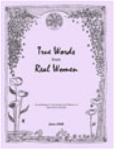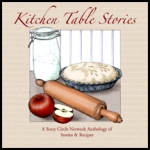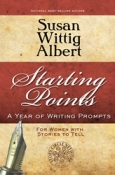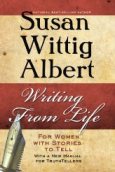The answers aren’t out there. It’s inside you, Babe.
Last night in our local critique group one of our writers read a poem about descending into a coal mine. The experience affected him profoundly. He’d whipped out a fine piece in two hours the night before. His poem was filled with rhythm and recurrence plus clear description of that underground world and his emotional response. I mapped the poem’s structure as it journeyed from innocent curiosity, degrees of fear, and resolution. The last bit of the poem departed from the pattern of “You could [be surprised, worry, rejoice in the beauty etc.] Did that departure work? Was it okay? Should he change it?
“That’s not mine to say,” I replied. “But, if it were my question, here’s how I would set about answering it.” I suggested that he read the poem out loud in a quiet place. Did he like the shift in technique and rhythm between the body of the poem and the end? Did the end further the poem’s meaning? How many other endings could he write to have some choices? What did the poem want?
His poem, simple and direct, reached out to the big questions of mortality, vastness, confinement, and their reverberation in his soul. Was there more? Damn straight. I suggested that he revisit his poem to pinpoint what had moved him down there in the mine. Reframe each stanza as a question, and write more about each one. “You have a lot more to say about this. Find out if there’s a cycle of poems here. Maybe you have a chapbook.”
Rainer Maria Rilke’s most famous quote is from “Letters to a Young Poet.”
Be patient toward all that is unsolved in your heart and try to love the questions themselves, like locked rooms and like books that are now written in a very foreign tongue. (Letter Four, 16 July 1903)
Less well known is the epitaph Rilke wrote to be inscribed on his gravestone: The work of the eyes is done. Go now and do the heart-work on the images imprisoned within you.
If we can frame the questions of our heart work, then these imprisoned images will fly to freedom on the page. This is our work to do. It’s not for others to say.
______________________________________________
Pose questions about practical creativity; give ideas for future cycle themes; and join in the dialog. See the Creative Catalyst archive at http://bit.ly/9z1BQv. Learn more about our audio book “Sightlines: A Family Love Story in Poetry and Music”at http://bit.ly/aZVd1e. Become a Riehlife Villager at http://www.riehlife.com







Very thought provoking, Janet. I seldom re-visit my poems and never in this way. Thanks for a stimulating approach to re-visioning our work.
Arletta,
Your comment means a lot to me. You are the Queen of Re-writing. Love to hear YOUR tips on how to re-vision work. Your patience and perseverance in working on your trilogy is truly inspiring.
Janet Riehl
…and tiring !
With deference to the X Files, I’ve been saying for years that the truth is not out there, it is inside of you—an observation not lost on Janet who knows that if you can probe further into your self, your dharma, then your art transcends the superficial into authentic you.
I know from personal experience that Janet has a gift for uncovering clarity in the midst of surface goo. Her advice to the poet above is genuine and priceless. Janet is not only on the right track, she is paving a path into new territory.
Never give a painting back to a painter. He or she will invariably change it.
If you want depth, you must dig deep.
In The Orphan’s Song Rilke writes:
“I’m no one, and that’s what I’ll always stay. I’m too little to be yet anyway;
But later too.”
We are no one in the essence of a poem yet we are everyone as impulses from a deep creative crater bubble up in our minds. Those impulses are ours alone, we own them like the sea owns each molecule of water. But, we share them so we can be splashed against the shore of knowing where we are too little to be and too fearful to understand.
Great insight Janet.
Hal,
I knew you’d like the Rilke quote. You might want to go back and read Hal Zina Bennet’s comment. It’s like a blog post!
Janet
The bugaboo of “it’s inside you” is locating where that is. I remember reading The Alchemist (Paolo Coelho) years ago, an entire book about discovering the heart (the inside) with many adventures and lots of discussion between the boy and the Alchemist about what that meant. Similarly, when I taught workshops I had people do an exercise called Writing in The Present. For some, it was instant connection with the inside, for others it was a frustrating puzzle. But what always amazed me was that even when writers had done it–connected with the inside, and almost instantly–they didn’t recognize it or didn’t know where to go with it. Why? Partly because inside is scary. We expend a huge amount of energy in our lives trying to stay away from it because “there be the demons, the shame, and crawly things.” But it’s not really that simple, either. Sometimes the inside just seems too banal to us. It’s too familiar. We live with it everyday. Why would anyone else be interested? Where’s the poetry? Indeed. But when you get into that place, or your pen or computer takes you inside, it’s electric for the reader and for you. I reread Hemingway a couple months ago, The Sun Also Rises: he’s banal, in one sense. He’s just telling how his days are going with his bunch of drunkard friends wandering aimlessly around Europe trying to figure out what their generation’s war was about and what the hell bullfights are about, and who Brett is screwing now and why Jake Barnes is such a pain in the butt. Not much goes on but what goes on is close to Ernest’s heart. We miss the point of what he’s about if we think he is reporting what’s really happening in his life; rather, he is doing a crackup job of shaping the memories of his with words. He’s touching that place that Yeats talked about, when you cannot tell the dancer from the dance. And he was an awful good wordsmith. Between the lines the book is about the words, his love of the words, a certain simplicity that takes him and the reader not so much into what Brett or Jake or any of the rest of them are doing but into the ecstatic place of a man writing a book, the love of the craft that Ernest had and that mattered to him more than anything else.That’s where his heart was. And, incidentally, if you look very closely, and you also read your bible–King James and his band of scurvy scribes–you’ll discover where bold, brash Ernest got his rhythms of language, the simplicity for telling a story, and a good part of his existential angst, in the process. Look at a passage like this (from Oxford Bible: Mark 5:35): “That day, in the evening, he said to them, ‘Let us cross over to the other side of the lake.’ So they left the crowd and took him with them in the boat where he had been sitting, and there were other boats accompanying him.” Finding the inside isn’t about bleeding onto the page or about flowery language or clever metaphors. It’s more about being present with what you’re doing right now, especially how it feels as you’re putting words on the page–or rewriting for the 17th time. That’s where the beauty of the writer in the act of writing and touching that inside place. The long and not so short of it is that touching the inside is the most elusive part of our craft. After publishing more than 30 books, there are maybe a few pages I love in each of them when the inside drives the writing. I like to believe that every writer knows it when they touch that place. It lifts you, literally, and is as difficult to explain as orgasm. Chaucer said, “The life so short, the craft so long to learn.” That’s pretty much the story, isn’t it?
Hal and Hal and Eden,
Thanks to my merry band of creative brothers. You are each and all my heroes and have taught me so much.
Thanks for enriching the dialogue!
Janet Riehl
Pingback: , By Hal Zina Bennett | Riehl Life: Village Wisdom for the 21st Century
Dear Readers,
Come comment on Hal Zina Bennett’s post at http://www.riehlife.com
Janet